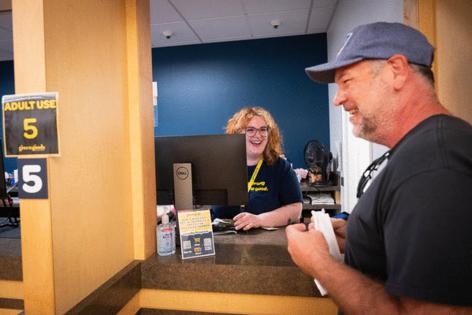Minnesota's medical cannabis dispensaries can now sell for recreational use
Published in News & Features
MINNEAPOLIS — Recreational marijuana is taking a major leap this week as more than a dozen dispensaries start selling for adult use across Minnesota.
On Monday, the Office of Cannabis Management (OCM) approved RISE and Green Goods, the state’s only licensed medical cannabis providers, to also sell recreational cannabis products at their sites across the Twin Cities and around the state.
Their new licenses mark a major expansion of Minnesota’s cannabis market, which is beginning to flower more than two years after recreational use was legalized in 2023.
“We really are kind of at the launch point,” said OCM Director Eric Taubel.
This week also marks the first time many Minnesotans will have a legal dispensary nearby after the slow state rollout left tribal nations operating the first handful of locations to date. A dispensary in Duluth also planned to open Tuesday afternoon.
Green Goods began serving recreational customers Tuesday at its eight locations, including downtown Minneapolis, Blaine, Bloomington, Burnsville, Hermantown, Moorhead, Rochester and Woodbury. Its downtown Minneapolis shop on 9th Street is the city’s first recreational dispensary.
RISE will follow Wednesday, kicking off with a ribbon-cutting at 8 a.m. before doors open at 9. The company operates dispensaries in Brooklyn Park, Eagan, Mankato, New Hope and Willmar, with adult-use sales set to expand soon to Baxter and St. Paul, and to St. Cloud the week of Oct. 6.
Both companies also have the ability to supply cannabis to other retailers, Taubel said.
“One of the key features of the medical combination license is that they can wholesale both medical and adult-use cannabis to state licensees,” he said.
Until now, both companies served only patients registered through Minnesota’s regulated medical program.
Their 13 dispensaries across the state have offered products aimed at treating conditions from chronic pain to epilepsy. Minnesota became the 22nd state to launch a medical cannabis program a decade ago.
“To be there on midnight of July 1, 2015, when we served the first three medical patients in the state, and to be there with the team this morning when we served the first adult-use customers of the same location… was a pretty full circle moment,” said Amber Shimpa, president of Green Goods’ parent company, Vireo Growth.
Peter Miller, 58, made his first stop at Green Goods after flying in from New York City with his wife.
He doesn’t smoke marijuana himself, but was buying products for her and her coworkers and was surprised to discover Green Goods — and even more surprised to learn Tuesday was its very first day of recreational sales.
The companies hold an advantage over newly licensed cannabis businesses because they have been cultivating marijuana indoors for years, said Jason Tarasek, a cannabis attorney. That means they already have product ready, while new businesses must first build growing facilities or source from tribal nations.
“Our medical providers have a bit of a head start, but everyone’s going to catch up rather soon,” Tarasek said.
By the end of the decade, Minnesota’s cannabis market could generate $1.5 billion in sales.
But the early years in most states that legalized recreational marijuana are marked by high prices and limited supplies. Tarasek said opening up sales through existing medical providers could help stabilize supply and pricing in the early months of adult-use rollout, before smaller retailers are established.
He called it a “short-term solution,” since RISE and Green Goods are “handcuffed” by state rules that limit how much they can sell into the adult-use market.
Medical cannabis combination businesses may only grow cannabis for recreational sales on a growing area half the size of the area used for medical cannabis the previous year.
Shimpa said Green Goods has no plans to limit how much product recreational customers can buy, though the company is keeping a close watch on supply constraints.
While RISE and Green Goods give the market an early boost, Taubel said their cultivation footprint is limited compared with what Minnesota will ultimately need. The state expects demand to reach 1.5 to 2 million square feet of canopy at full maturity.
“Even the amount of canopy they bring into the market today isn’t that substantial as we think about the bigger picture,” he said.
Until cannabis supplies are able to adequately meet or exceed demand, prices are likely to remain higher in Minnesota than they are in states with more established markets, like Michigan.
Both Green Goods and RISE will continue serving medical patients, who don’t have to pay sales and cannabis taxes.
Some recreational customers are already balking at the costs compared to black market prices, however.
Josh Atchley, 49, of Minneapolis, stopped by the downtown Green Goods location Tuesday and said the experience was convenient: “People are very nice, everything’s laid out and easy to order on the website.”
Still, he said he doesn’t plan to return soon, citing the high prices and taxes.
_____
©2025 The Minnesota Star Tribune. Visit startribune.com. Distributed by Tribune Content Agency, LLC







Comments